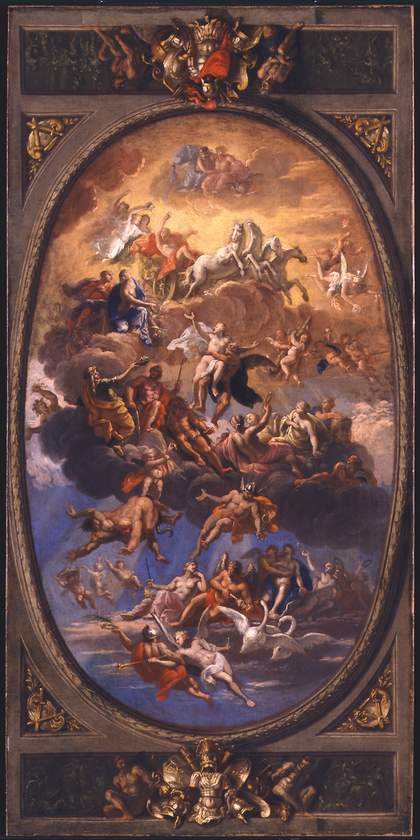
Fig.1
Antonio Verrio 1639 – 1707
Sketch for a Ceiling Decoration: An Assembly of the Gods
c.1680 – 1700
T00916
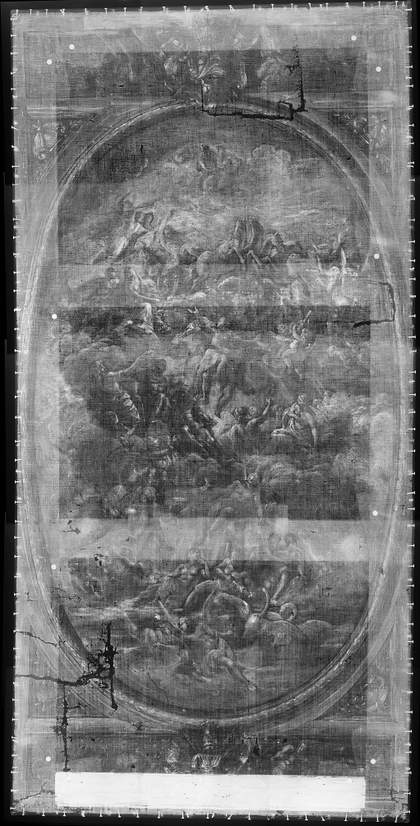
Fig.2
X-radiograph of Sketch for a Ceiling Decoration: An Assembly of the Gods
c.1680 – 1700
This painting is in oil paint on canvas measuring 1703 x 829 mm (fig.1). The coarse, plain-woven canvas has 11 vertical and 9 horizontal threads per square centimetre. The threads are of uneven thickness with many slubs, particularly in the vertical direction. The tacking edges are no longer present and there is little evidence of cusping, except at the left edge.1 2 The support has suffered many tears in the distant past, particularly in the bottom left corner and at the top of the coat of arms motif. The extent of these is visible in the X-radiograph (fig.2).
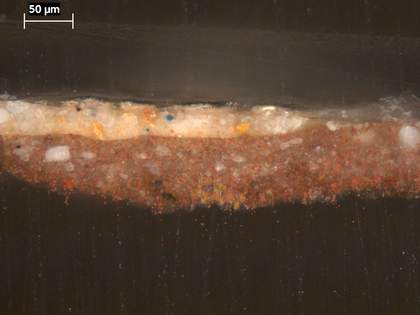
Fig.3
Cross-section from orange coloured sky, photographed at x320 magnification. From the bottom: brown ground, maximum thickness 80 microns; orange sky paint, 20 to 40 microns thick; synthetic resin varnish
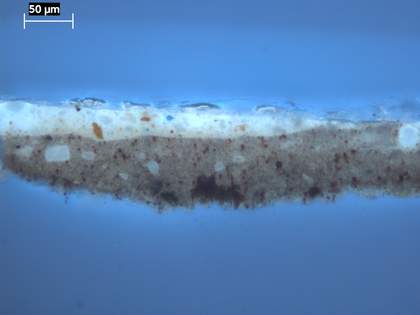
Fig.4
The same cross-section as in Fig.3, photographed at x320 magnification in ultraviolet light
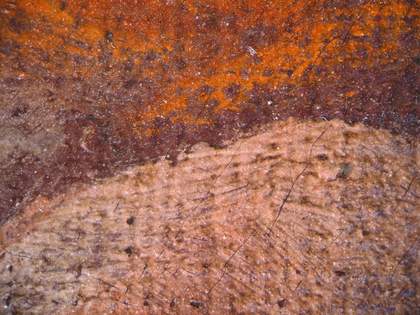
Fig.5
Deliberate use of the ground as shadows between flesh paint and drapery. Photographed at x8 magnification
The oil-bound ground is purplish brown (figs.3–4). It is opaque and contains vermilion, a range of earth pigments, lead white, Cologne earth, bone black, a large proportion of chalk and traces of kaolin and talc. The ground was deliberately left visible to depict warm shadows in the composition (fig.5). There is no priming.
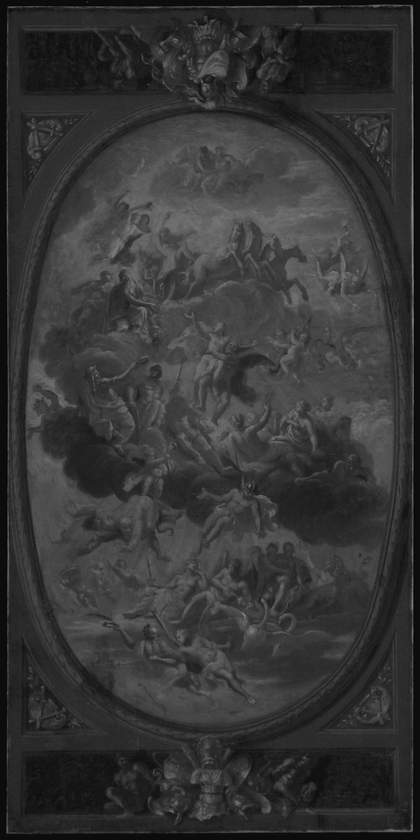
Fig.6
Infrared reflectogram of Sketch for a Ceiling Decoration: An Assembly of the Gods
c.1680 – 1700
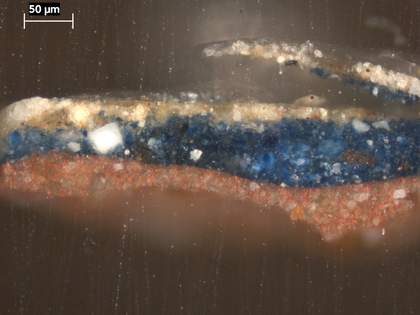
Fig.7
Cross-section from yellow drapery, which appears to have been altered from blue by the artist. It was photographed at x320 magnification. From the bottom: sliver of brown ground; thick blue paint; yellow paint of drapery; synthetic resin varnish
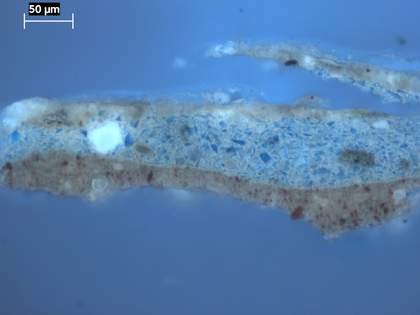
Fig.8
The same cross-section as in Fig.5, photographed at x320 magnification in ultraviolet light
No underdrawing is visible with the eye or with infrared reflectography (fig.6), nor are there any artist’s alterations, except perhaps in the changing of a blue garment to yellow (figs.7–8). The painting was done wet-in-wet with bright, pure colours, all of which contain significant amounts of chalk, probably to give the paint bulk. Some of the bright reds were given a final glazing with red lake, now largely faded. The bright orange drapery of the central god was mixed from realgar, lead white and chalk. The bright red drapery on the armour in the top central decoration was mixed from vermilion, red lake, lead white, ground glass and chalk. The orange sky contains lead white, realgar, lead tin yellow, vermilion, yellow lake, red lake and ground glass. Pale blue sky areas contain lead white, ultramarine, smalt, black and chalk. Yellowish green drapery of the god holding laurel on the left side of the composition contains lead white, blue verditer, ultramarine, yellow lake, red lake, lead tin yellow and chalk. The bright blue drapery of the kneeling woman next to the chariot contains lead white, ultramarine, ground glass, black and chalk.
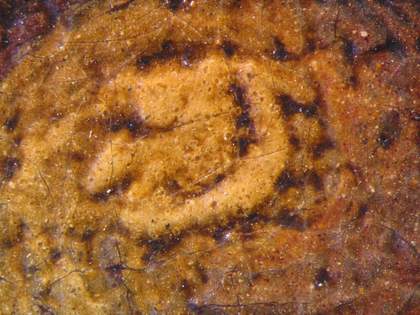
Fig.9
Detail at x8 magnification of lead soap protrusions in yellow shield
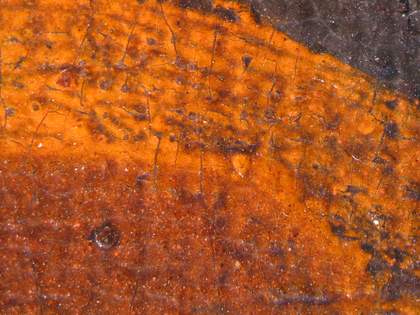
Fig.10
Detail at x8 magnification of lead soap aggregates protruding through the paint surface, and drying cracks, in Mercury's orange robe
Some areas of the painting have developed aggregates of lead soaps that are now protruding through the paint surface (figs.9–10).
September 2020
